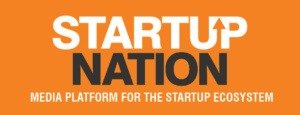
SAMIR MARDOLKER argues that innovation often fails not because ideas are weak, but because they are framed through the wrong human lens; and shows how reframing tension through empathy can turn ideas into impact
Growing up in Goa, you get used to rhythm; how people, tides, and ideas move in their own time. You learn that progress isn’t about control; it’s about understanding people and knowing when to act. Years later, working in innovation, that same lesson holds: the best ideas don’t come from forcing logic but from reading emotion. Most companies treat innovation as problem-solving. Something is broken; let’s fix it. But many failed innovations weren’t bad ideas; they were good ideas trapped in the wrong frame. We solved the wrong problem, or we played the wrong role.
The Hidden Drama of Innovation
To explain this, I often draw from psychology; specifically, the Karpman Drama Triangle, which maps dysfunctional human interactions through three roles:
• Victim – feels powerless or stuck
• Rescuer – fixes or saves
• Persecutor – blames or enforces
Now think of how many marketing briefs sound like this triangle. The consumer is cast as a Victim (‘tired,’ ‘confused,’ ‘time-starved’), the brand as a Rescuer (‘simplifies,’ ‘saves,’ ‘makes life easy’), and somewhere in the background lies an unnamed Persecutor – social pressure, guilt, or habit. The problem? When you play Rescuer, you remove the tension that gives your brand meaning. You fix the symptom but ignore the system.
When Brands Reframe instead of Rescue
The most powerful innovations don’t fix pain; they reframe purpose. They help people see the problem differently; and themselves differently.
• Unilever’s ‘Dirt is Good’ didn’t rescue mothers from stains. It reframed dirt from failure to freedom; a sign of growth, curiosity, and care.
• Ariel’s ‘Share the Load’ didn’t sell detergent. It confronted gender inequality, naming patriarchy as the real Persecutor.
• Airbnb’s ‘Belong Anywhere’ didn’t simplify booking. It reframed travel from service to belonging.
• Heineken 0.0 didn’t remove alcohol; it removed judgment; redefining masculinity around choice, not consumption.
Each of these brands stopped rescuing consumers from discomfort and instead gave that discomfort meaning. That’s what reframing does; it turns emotion into energy.
From Solving to Coaching
This shift from fixing to reframing mirrors how human growth actually works. In therapy, Carl Rogers’ person-centered approach showed that people don’t change because someone tells them what’s wrong; they change when someone helps them find their own meaning.
Innovation works the same way.
When we guide consumers or organizations through reflection rather than prescription, we move from solution to coaching mindset. The goal isn’t to eliminate tension but to help people grow through it. I saw this play out years ago on Kellogg’s in India. The brief was to simplify breakfast for busy moms. But the more we simplified, the more we risked erasing her role. So we reframed the task: not ‘remove her struggle,’ but ‘support her balance.’ Kellogg’s became an ally in nutrition, not a shortcut to care and that’s when the message clicked.
Tension is the Engine of Innovation
We are wired to remove friction, but friction is where growth hides.
In marketing, we call it creative tension, the space between what people feel and what they wish to feel.
Innovation strategy should preserve that tension, not erase it.
Because when you remove every conflict, you remove the reason to act.
Airbnb kept the tension between ‘stranger’ and ‘belonging.’
Heineken kept the tension between ‘masculinity’ and ‘moderation.’
And ‘Dirt is Good’ lives entirely in the tension between ‘messes’ and ‘meaning.’
In each case, tension wasn’t the obstacle, it was the engine.
The Human Edge in an AI World
As AI gets better at predicting behaviour, the real advantage lies elsewhere, in Human Intuition. AI can process patterns. Humans can interpret them. The future of innovation isn’t about who has more data; it’s about who can read emotion better, who can see the unseen. Great innovation strategy is 30% data and 70% empathy, the ability to make people feel understood before making them act. That’s not softness; that’s precision.
Closing Thought
Innovation, like life, moves in rhythm. You can’t rush people into change; you invite them into it. When brands stop rescuing and start reframing, they unlock something deeper; meaning, not mechanics. Growing up in Goa probably made that instinct second nature: listen before acting, sense before deciding, and let people’s stories shape the solution. Because the best innovations don’t fix life; they fit life, beautifully reframed





